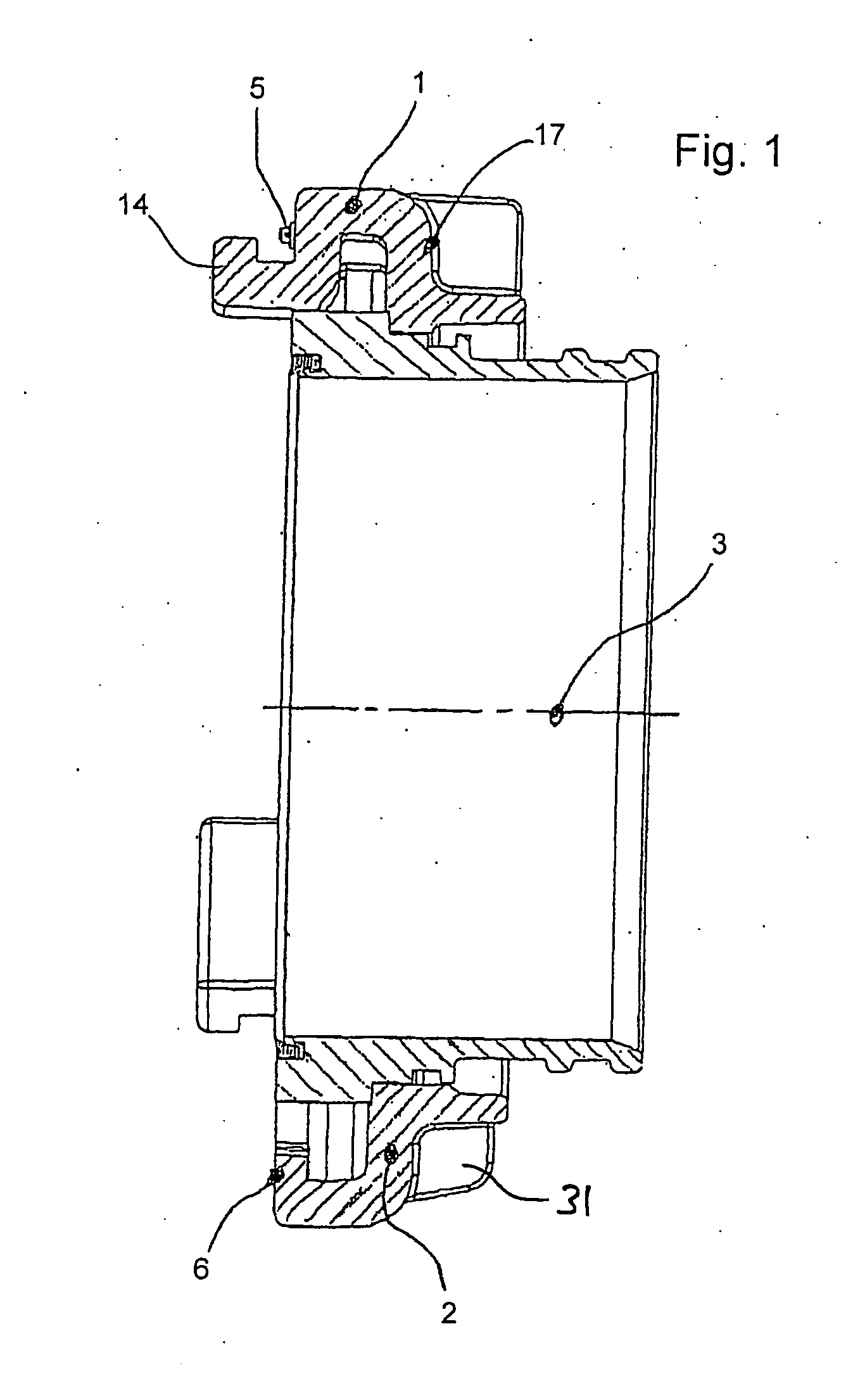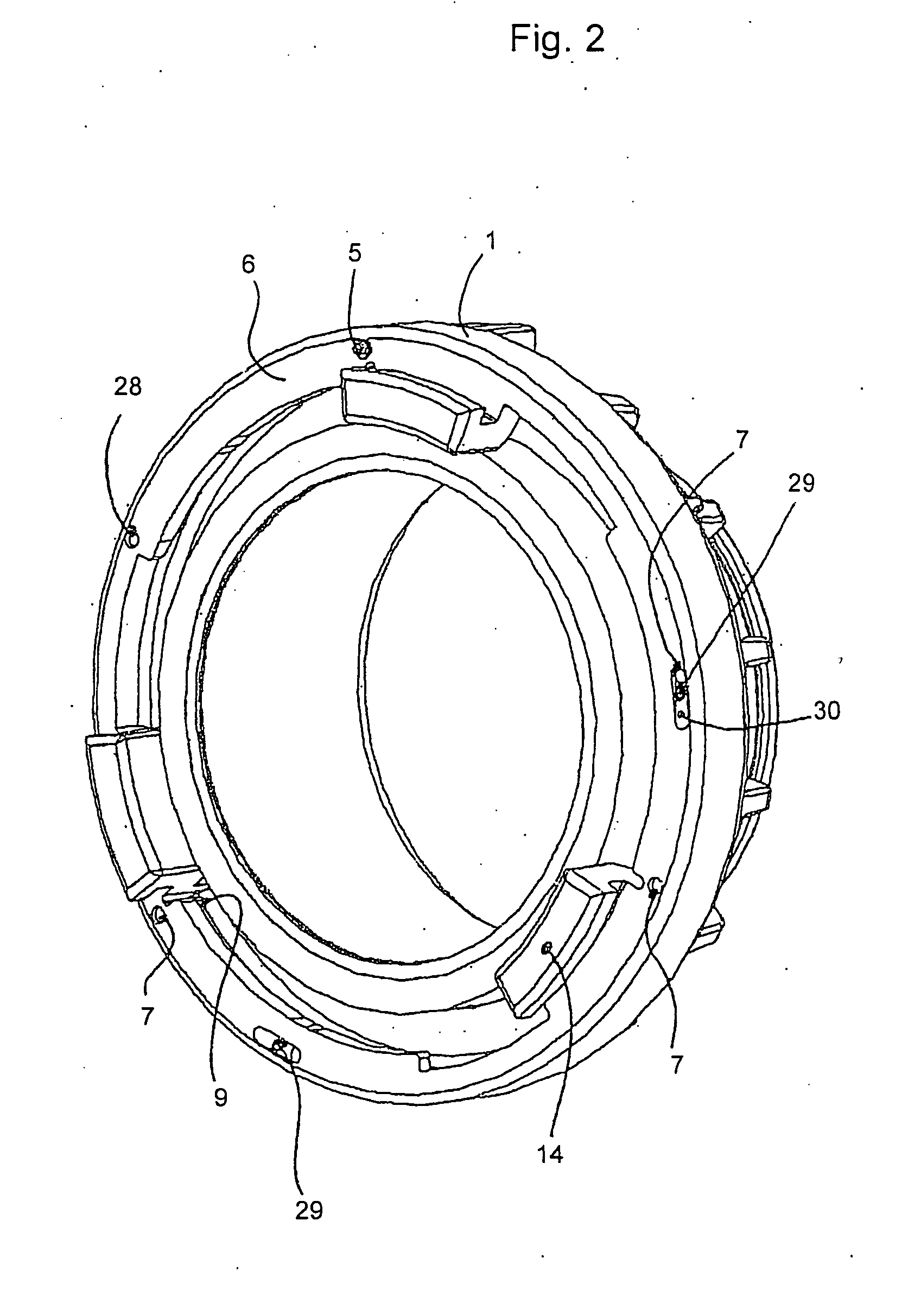Hose coupling with a locking mechanism
a locking mechanism and coupling technology, applied in the direction of fluid pressure sealing joints, couplings, pipe elements, etc., can solve the problem that the reduction in the strength mentioned with respect to the configuration of the locking mechanism cannot be accepted in a hitherto used version, and the use of forging technology is too expensive. problems, to achieve the effect of efficient protection against rotation
- Summary
- Abstract
- Description
- Claims
- Application Information
AI Technical Summary
Benefits of technology
Problems solved by technology
Method used
Image
Examples
Embodiment Construction
[0020] The Figures show a coupling half of a Storz coupling modified according to the invention and having three cam / shoulder pairs. Since Storz couplings are generally known to a person skilled in the art, only the specific features according to the invention are described in detail in the following description.
[0021] On a collar 1 of a cam piece 2, a latching pin 5 which is mounted in parallel to a flow axis 3, and which is biased by a pressure spring 4, projects a few millimeters beyond an end face 6 facing a counter-coupling half. The latching pin 5 latches, in a coupling end position, into place in a latching hole 7 configured as a blind hole on the counter-coupling half after having run over additional latching points 29. The coupling end position as limitation of the coupling path is realized by a radial face 8 on a stop 9 at an end portion 10 of a coupling shoulder 11.
[0022] The position of the latching pins 5 and of the latching holes 7 is chosen such that they lie one on...
PUM
 Login to View More
Login to View More Abstract
Description
Claims
Application Information
 Login to View More
Login to View More - R&D
- Intellectual Property
- Life Sciences
- Materials
- Tech Scout
- Unparalleled Data Quality
- Higher Quality Content
- 60% Fewer Hallucinations
Browse by: Latest US Patents, China's latest patents, Technical Efficacy Thesaurus, Application Domain, Technology Topic, Popular Technical Reports.
© 2025 PatSnap. All rights reserved.Legal|Privacy policy|Modern Slavery Act Transparency Statement|Sitemap|About US| Contact US: help@patsnap.com



